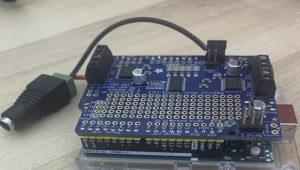This week, I worked with the group on writing the design report. Besides that, I finalized the motor drivers for the arduino as well as the interface between the arduino and rpi. There are now commands for dealing a card and rotating the platform an arbitrary amount of steps. The rpi will wait for the arduino to send back a “done” message to ensure the two microcontrollers stay synchronized. I also wrote code for data collection for the card classifier.
I am on schedule. Next week, I will work with Jason on generating the card classifier data set as well as implementing the interface for the hardware controller. For generating data, generating images of the bottom is very simple as dispensing cards is automated. However, generating images from the top is more tedious as we need to manually place each card so we cannot automate the data collection process. This just means we’ll have to spend some time taking pictures.


